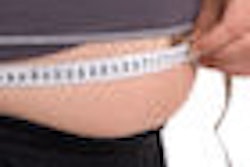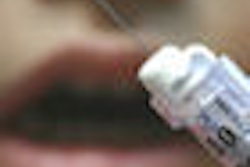
Encourage smokers to smoke. Put patients in wheelchairs, even if they can walk. And if they get really upset, administer peppermint LifeSavers.
These were some of the surprising tips offered by Michael D. Silverman, D.M.D., and Anthony S. Feck, D.M.D., of DOCS Education, at a recent meeting of the California Dental Association (CDA) in San Francisco.
Dentists who can sedate their patients wind up with happier patients and busier practices, said the duo, who have taught sedation techniques to thousands of dentists around the U.S. In this talk, the doctors focused on anxiolysis, the mildest level of sedation.
Reasons to sedate
Dr. Silverman ticked off the following reasons why dentists should consider using anxiolysis:
- The quality of care is better because the patient is more relaxed. Dr. Silverman described how he used to nervously memorize the instructions for a new composite system just before treating a patient. "If the patient is sedated, you can put the instructions on their bib and read it out," he said. "The patient doesn't care, and they don't remember."
- The patients are more grateful. They often say things like, "I'm really glad you're here because if you weren't, I would never have had this done."
- The visits are less stressful for the dentist because the patient is more relaxed and cooperative.
- There are fewer failed appointments.
- Patients accept more treatment, thinking, "Hey, if I'm going to be out, I might as well have the whole thing done."
Candidates for sedation
According to Dr. Silverman, patients who are most likely to benefit from sedation include:
- Those with a severe gag response. Gagging is not a "reflex," Dr. Silverman argued; if it were, patients with this problem could not eat.
- Anxious and fearful patients. The DOCS docs cited three Web sites (such as this one) claiming as much as half the U.S. population is affected by fear of dentistry. "These patients want that pill as much as they want their next breath," said Dr. Feck.
- Patients under tight time constraints.
- Patients needing complex restorations because they are going to have to stay in the chair for a long time.
The protocol
In many states, dentists can use anxiolysis without a separate permit, Dr. Silverman said. At this level, "basically they got the edge taken off. They're not so worried anymore."
This can be achieved with oral doses of three benzodiazepines: lorazepam (Ativan, Temesta), triazolam (Halcion, Hypam, Trilam), or diazepam (Valium). Two nonbenzodiazepines, zaleplon (Sonata, Starnoc) and hydroxyzine (Vistaril, Atarax), have similar effects. Nitrous oxide can be a helpful adjunct, but you shouldn't use it continuously, said Dr. Silverman.
He and Dr. Feck advise the following protocol: A healthy adult swallows 2.5 mg to 10 mg of diazepam the night before the appointment. He or she then takes 0.125 mg to 0.5 mg of triazolam sublingually in the office an hour before treatment, and is administered nitrous oxide during the delivery of the local anesthetic, titrated to effect.
At this level of sedation, the patient should remain conscious. "If they look like they're asleep, we want to bring them to a level where they can respond to verbal commands," Dr. Silverman said.
While sedatives given orally can't be titrated, they are easier to administer. "I have done a lot of IVs and I have missed my share of veins," said Dr. Feck. "But I have never missed an esophagus."
The benzodiazepines and zaleplon can be reversed with flumazenil (Anexate, Lanexat, Mazicon, Romazicon).
Tricks of the trade
Among the other tips Dr. Silverman and Dr. Feck offered:
- Monitor the patient with a pulse oximeter. "I don't care if you give only one Valium before the appointment. If you don't have one and something goes wrong, you will not look very good in court," Dr. Silverman said. It's helpful to have a built-in printer in the oximeter so you can keep written records.
- A chair pad can keep patients comfortable and reduce the probability that they will shift around in the chair.
- Pill crushers are useful in administering pills under the tongue. You might want to crush a peppermint LifeSaver along with the pill to improve the flavor. The LifeSavers are also handy as a placebo if the patient asks for another dose -- which would exceed the level of sedation you are permitted to administer.
- Use a wheelchair to escort the patient out of the office. "If, god forbid, they should trip on the way out, it's on us," said Dr. Silverman.
- If the patients are smokers, encourage them to smoke just before the appointment. This will make them calmer. However, they should not drink alcohol.
- Sedated patients are receptive to suggestion. If you tell them they are going to love their smiles, they're more likely to love their smiles. If you tell them they are good patients, they're more likely to be good patients.
- Of all the oral sedatives, triazolam is least likely to cause respiratory depression. "If you were to ingest two bowling-ball-sized tablets of triazolam, you would have a 50% chance of living," said Dr. Feck, who was referring to a healthy adult patient.
Also, triazolam causes patients to forget what happens during their treatment. "This is a great thing," said Dr. Feck. "In my opinion, it may be the greatest effect."
Copyright © 2009 DrBicuspid.com



















